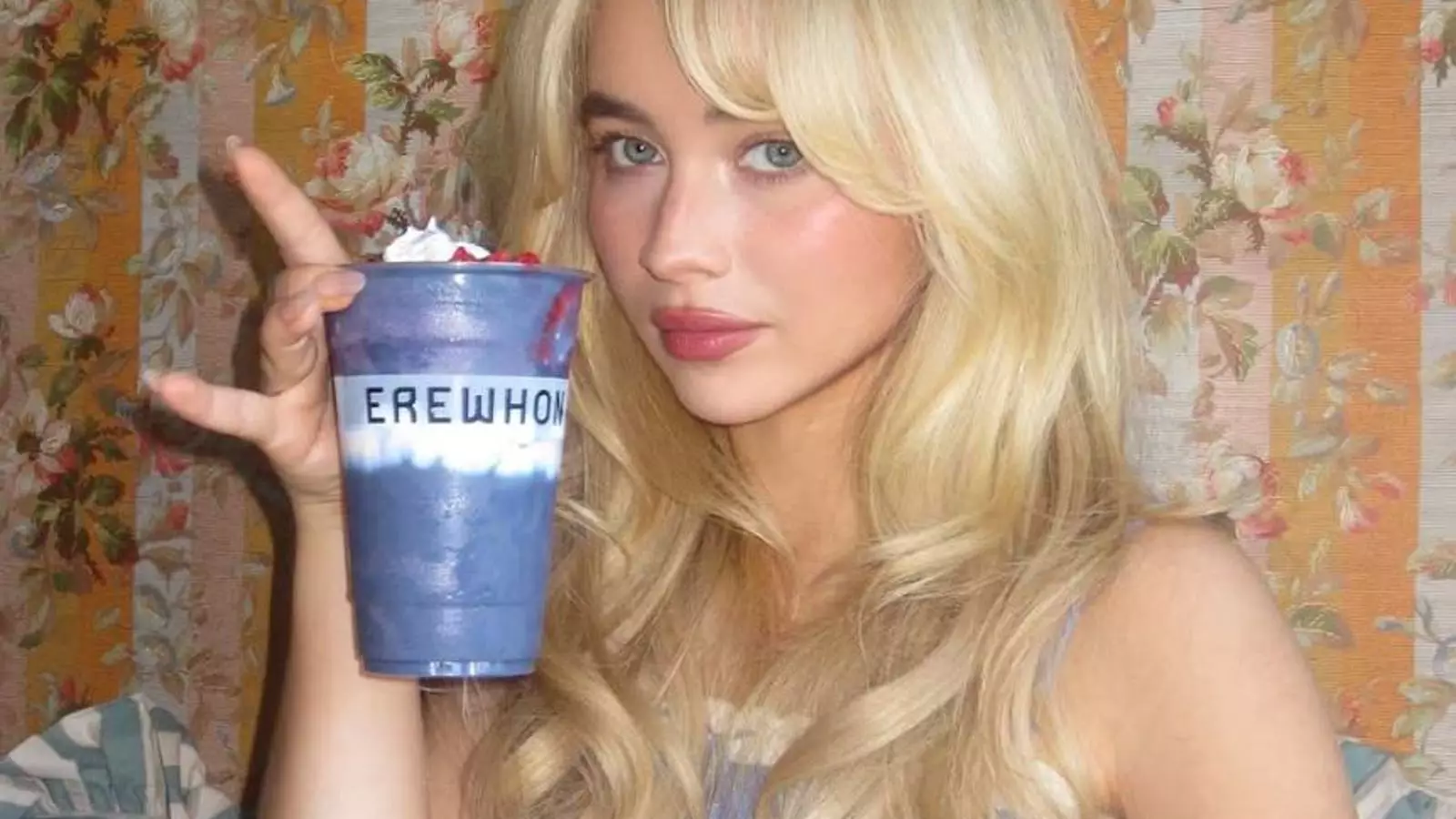In Samuel Butler’s 1872 novel, “Erewhon,” illness is treated almost as a criminal offense, a notion that provides a satirical look at the dynamics of health and morality. Fast forward to today, the concept of Erewhon has transcended literature to materialize as a high-end grocery store in Los Angeles, where the price of health climbs to ostentatious heights. With smoothies priced at $22 and strawberries at an eye-watering $19, Erewhon represents an evolution not just of a brand but of a cultural phenomenon where wellness and status coalesce into a perplexingly lucrative enterprise.
What strikes at the core of Erewhon is not merely its products but the underlying ideology that governs consumer behavior. In this luxurious grocery environment, choices extend far beyond mere nutrition; every item on the immaculate shelves is weighed against moral and ethical implications. Is it biodynamic or conventional? Should the dairy be raw or pasteurized? The prices tag not only monetary values but questions of virtue and lifestyle.
The Shift from Counterculture to Commercialism
The original Erewhon, founded in 1966 by Michio and Aveline Kushi, began as a humble health food store in Boston, deeply rooted in countercultural values and the macrobiotic movement. Fast-forward to its relocation to Los Angeles: the essence of the brand transformed dramatically. The store has shed its asceticism and embraced a corporatized ethos aligned with the burgeoning wellness industry. Today, with over ten locations sprawled across Los Angeles County, Erewhon resembles a chic boutique more than a grocery store, selling not just food but an enticing lifestyle.
In its evolution, Erewhon has taken cues from high-end fashion retail, curating an experience where gourmet ingredients—from Japanese strawberries to celebrity-branded smoothies—are commodified as markers of health and prestige. Where Whole Foods once held the title of “Whole Paycheck,” Erewhon has elevated this idea to a dizzying realm of exclusivity; one grocery trip can easily exceed an extravagant $300. Still, the jaw-dropping prices draw crowds. The secret sauce? Exclusivity. Like luxury fashion, if something is sufficiently pricey, it becomes desirable, and consumers will clamor for it, unearthing the dire implications buried underneath the vibrant branding.
The Ideology of Health: A Pursuitimposed by Price
Erewhon does far more than sell products; it projects an ideological framework that defines health in uncompromising terms. Dairy is always raw, meat is invariably grass-fed, and every product is replete with supplements promised to optimize the body. The very layout of the store shouts an implicit narrative: adherence to these principles is not a mere preference; it borders on a moral obligation. This ideology finds its roots in Butler’s critique, which stands as an eerie parallel to the present-day shopping experience. In the shadow of Erewhon’s polished aisles lies an unspoken truth: to be sick is to be negligent.
In a society where wellness is encoded as a lifestyle, illness is seen as a reflection of personal failure. Should you find yourself unwell, it is easy to internalize the message that you must have simply failed to invest enough—whether that be time, energy, or indeed, money—in your health. The manner in which Erewhon weaves together commerce with culture embodies this unsettling truth: the facade of wellness often conceals precarious moral codes.
The Celebrity Effect: Crafting an Image of Wellness
Celebrity collaborations propel Erewhon further into the cultural stratosphere, establishing a direct line between status and wellness products. Take the viral success of Hailey Bieber’s “Strawberry Glaze Skin Smoothie” priced at $17; it propelled the store to become synonymous with celebrity culture. With familiar faces like Kim Kardashian and Bella Hadid spotted with Erewhon tote bags, each purchase becomes not merely a nutritional choice but a performance—a statement of self-care gilded in labels and price tags.
Instagram has played a crucial role in shaping Erewhon as a spectacle of wellness, where products and promotions overflow with aesthetics designed for social media validation. The experience is curated; it entices the consumer to document their health journey as one of beauty and exclusivity. This curated health narrative has taken on an aesthetics-driven approach—it’s not merely enough to be healthy; one must also appear as such, flaunting their health choices for digital applause.
Erewhon does not assume a position of satire. Rather than mock the commodification of health, it capitalizes on it, turning the archaic warning of Butler’s Erewhon into an exploitative culture that celebrates the transmutation of wellness into a status symbol. The reality we face is that we have stepped into Butler’s world—and rather than recoil, we find ourselves eagerly accepting the high cost of wellness, even if it borders on absurdity. The existence of a $19 strawberry is not merely accepted; it has become a symbol of aspiration and desire, revealing the complexities of modern consumerism in an era where health is no longer a right but a luxury wrapped in privilege.


Leave a Reply